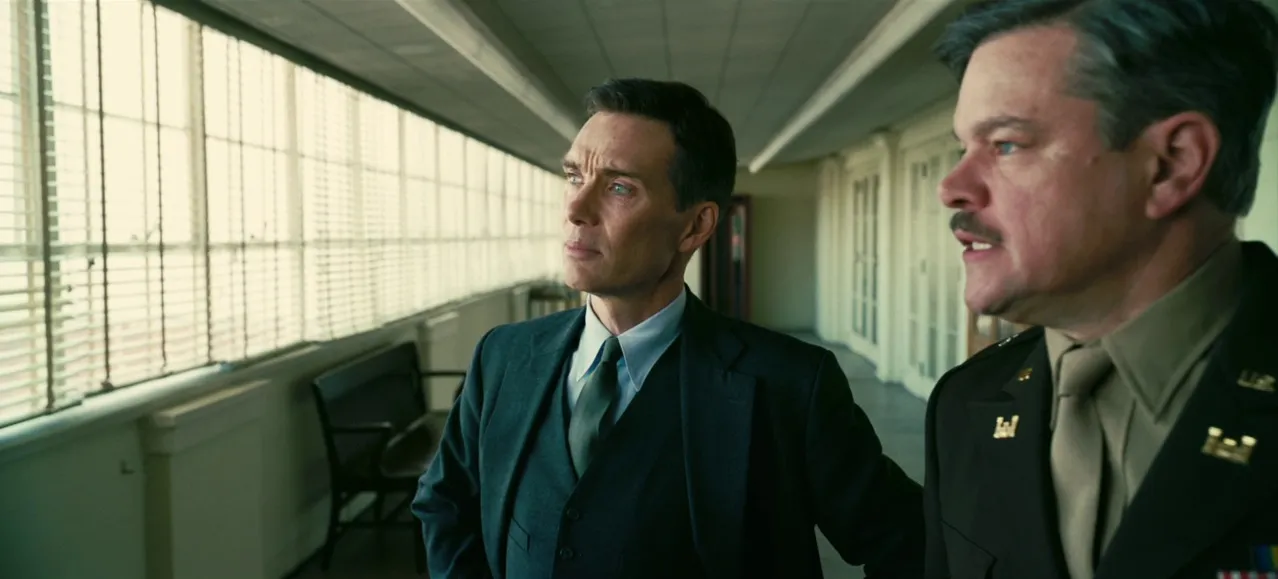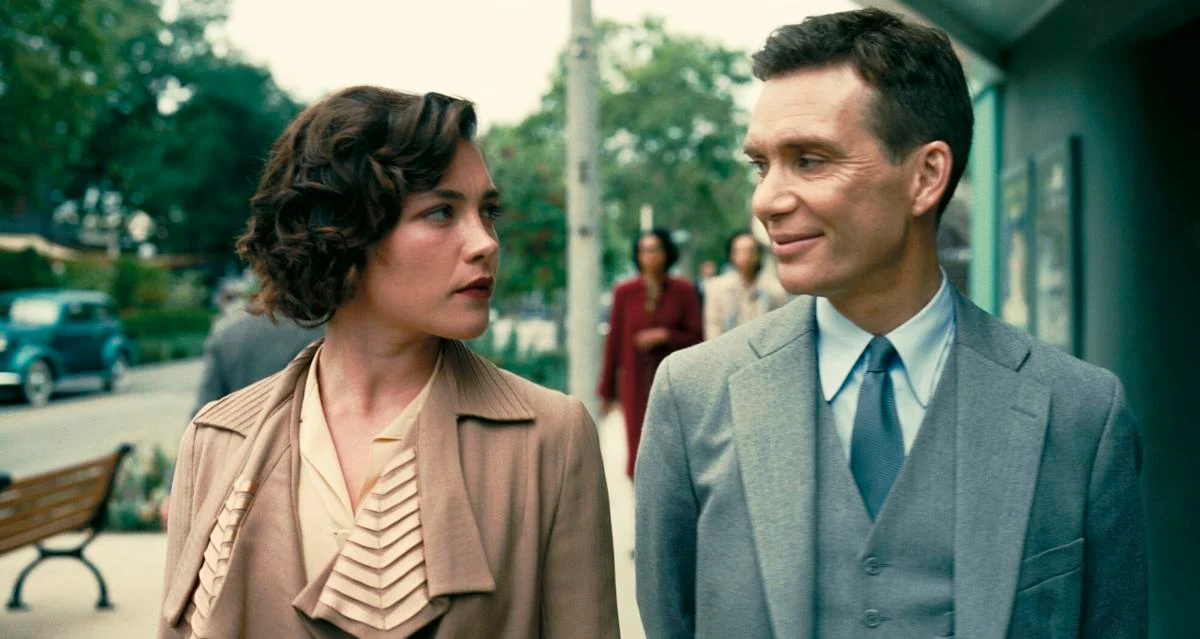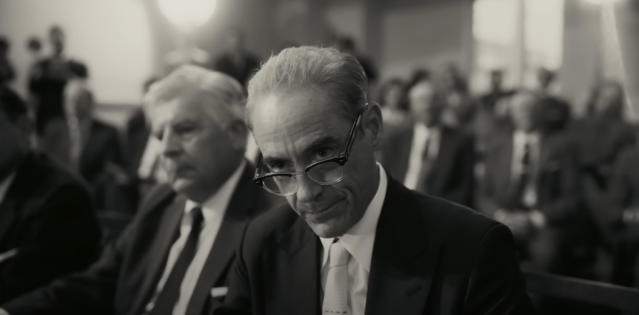Want to hear more from the actors and creators of your favorite shows and films? Subscribe to The Cinema Spot on YouTube for all of our upcoming interviews!
Lead Critic for the site, as well as serving as an editor when needed.
Writer/director Christopher Nolan has redefined the modern blockbuster. Nolan’s films are in constant use of a grand scale. Arguably, he makes each proceeding film bigger than the last. He is also the pioneer of using IMAX film cameras to shoot movies, having first done so for twenty eight minutes of 2008’s The Dark Knight. IMAX cameras hadn’t seen maximum use with filmmaking prior to that point.
Afterwards, IMAX cameras have been used near constantly for big budget studio projects, such as last year’s NOPE and Top Gun: Maverick. Furthermore, while filming Oppenheimer, Nolan and his cinematographer, regular collaborator Hoyte van Hoytema, developed new lenses and film stock for IMAX cameras.
Thus resulting in the IMAX 70mm print film stock running eleven miles long (when rolled out) and weighing six hundred pounds! The Chinese Theatre in Los Angeles reportedly had to install an extension to the projector in order to show the epic. Furthermore, the eleven mile stock took up nearly every single inch of film available, with the one hundred eighty page script being the absolute limit IMAX cameras can take script to screen. Now that new lenses, mostly for shots like the close up, and film stock are available with these cameras, more films can be shot in a similar fashion. It’s a very exciting time to be a cinephile.
With Oppenheimer, Christopher Nolan boasts his most impressive direction thus far, and while my screening was only 70mm film stock and not specifically IMAX 70mm, the images and visuals are absolutely breathtaking nonetheless. Nolan puts the audience in a chokehold, and never lets go. Suffocating his viewers with an image of a man on the cusp of total greatness, only to have him reckon with everything he’s just created and oversaw. It’s such a fascinating film, and absolutely phenomenal work by Nolan. It would be a shame to see Best Adapted Screenplay go to another film at the Oscar’s.
Spoilers to follow.
Nolan’s Narrative
In recent films (and most of the time), Nolan’s films follow the non-linear narrative format of storytelling. He applies the same technique to Oppenheimer, only it makes the narrative much more interesting rather than less. Further, when the switch happens, the frame goes from color to black and white, so you never really have a hard time keeping up anyway. There’s even instances of a call back to someone or something earlier in the film and it quickly jumps back to that image to remind the audience. The script is, perhaps, the best outcome of Nolan’s writing ability thus far.
While the film definitely examines the life of J. Robert Oppenheimer, it is more a character study akin to something like Taxi Driver. And while these are two completely different films about very different things, the point is that Oppenheimer is really a three hour character study of one man’s choices and decisions and how those ultimately effect the world at large. Because, like it or not, what happened in 1945 still has ramifications today, even if no one notices. Being such, it also doesn’t fall into many of the same traps as biopics, which is great.

We begin with Oppenheimer finishing his post-grad studies in Europe, and the film does a quick job to wrap this up and shift to his teachings at Berkeley, where things really begin to take shape for the story at hand. The film presents the color sequences as “Fission” and the black and white as “Fusion.” This is so because the black and white proceed the end of World War Two, while obviously the color doesn’t and the characters have yet to merge (achieving fusion is the merging of elements). While everything bounces back and forth as Nolan tends to, as aforementioned it is rather easy to keep up with.
The dialogue is also noteworthy because everything is put in the simplest of terms for everyone to understand. The debates are also very enthralling to watch because you can understand everything and you feel as fired up as the scientists on screen are. Nolan also continually throws in issues that relate to the world today, which makes the story feel as relevant now as it was when it all happened. Nolan’s dialogue is some of his strongest ever. The final scene, which will be discussed more later, is by far and away my favorite final scene from his entire filmography because it reinforces how Oppenheimer viewed his creation after its use, and what he thinks could possibly happen to the world now that a bomb of this magnitude is real.
Nolan’s Biggest Cast of Characters
Nolan is also known for his use of great actors using small ensembles. However, as everyone knows, this will probably be the biggest cast ever in any of his films. Every single member of the cast does their job perfectly and display some of the best performances in cinema history. Many actors, such as Devon Bostick, get only a few scenes. And while, at times, everyone is just in the scene for the sake of history, everyone gets their time in the spotlight. The sheer chaos of a script with this many characters is balanced to near perfection, which is why everyone has their time to shine.

Along with Cillian Murphy as the titular theoretical physicist, Emily Blunt shines as his wife Katherine “Kitty” Oppenheimer, and Robert Downey Jr. portrays Lewis Strauss in a career high role. While not every cast member would go home with an Academy Award, at the least, Murphy, Blunt and Downey definitely deserve their time on stage. Every single cast member executes their role to the letter and this is one of the best casts assembled in recent memory. Rounding out the main cast is Matt Damon as General Leslie Groves, the designer of the Pentagon and director of the Manhattan Project. Florence Pugh also shines here as Jean Tatlock, a member of the Communist Party of the United States of America and lover to Oppenheimer.

Josh Hartnett, Benny Safdie, Dane DeHaan, Casey Affleck, Rami Malek, Kenneth Branagh & Alden Ehrenreich also standout amongst the hugely stacked cast. In terms of smaller characters, actors like Bostick, Alex Wolff, Matthias Schweighöfer, James Remar, Dylan Arnold, David Dastmalchian, & Gary Oldman offer smaller roles but still contribute as well. Nobody overplays here. The entire cast is fantastic.
The Trinity Sequence
This was an amazing sequence on it’s own. It has to be one of the best visual pieces in cinema history. The sheer anticipation of the detonation was incredible itself. The bomb goes off and it’s pure silence and then the screen flickers between lights and the entire explosion; it’s almost magnificent in a way, if it was never used again. The lights come at the scientists and everyone else; then the sound explodes. The editing within this sequence is some of the best on display this year.

Technical Parts
Nolan performs his best direction here, and van Hoytema also gives an Oscar worthy set of cinematography. The camera captures every inch of the actors in the frame, and on 70mm film stock, the images and blocking are pristine. Jennifer Lame, returning from Nolan’s last film, Tenet, gives the film fantastic editing and is never out of pace with the story. Everything is so clear, clean and precise to the letter. The three hour runtime never felt overdone in any sense.
The writing of Oppenheimer is some of the best from any biopic. The third act is perhaps the most “Nolan” of all here as well. In tons of conversations throughout the film, the characters speak of things like world ending or bigger bombs. It seems that the titular character and director are both trying to make the audience really understand what could happen if something bigger got out of hand. It also explains how Oppenheimer’s security clearance was revoked and his troubles within the government in classic Nolan fashion via Lewis Strauss, which also helps tremendously because of Downey.

The final scene is another fantastic addition because of Nolan’s writing. A small part takes place during the beginning of the film from the perspective of Strauss, but Oppenheimer’s is revealed in this final scene with Albert Einstein (Tom Conti). It seems to truly reveal in some fashion how the men could’ve felt now that the atomic bomb is a reality and it was used twice, thus a “chain reaction” is hypothetical in this sense. While a nuclear bomb has never been used since World War Two, it is definitely a real possibly because of several country’s munitions stockpiles, but that’s neither here nor there for now. The execution of the scene is just phenomenal.
Ludwig Göransson returns to score Oppenheimer and delivers his best one yet. The violin base of the score makes the film a bit more menacing, and really settles the audience into the film at the same time. His score is bone-chilling and creates the perfect atmosphere.
Final Thoughts
Oppenheimer is one of this year’s best films. While only halfway through, it is a great time for cinema, and Christopher Nolan remains a huge filmmaker making movies for the theatre. This film blew away any expectation that might’ve existed and slammed it away. If you don’t go see it in IMAX, try to find a 70mm or 35mm film print showing, as Oppenheimer is meant to be seen that way.
Nolan’s film is a triumph for cinema. It never really slows down, and throws so much for the viewer to digest. It works in such a way that you want to continue to know what Oppenheimer is going to do or say next. Everything is a phenomenal showing of filmmaking. It’s intense and electrifying, with astounding technical elements on display as well. It all works!
5/5 stars.
Christopher Nolan’s Oppenheimer is now playing in theatres worldwide!
For more from The Cinema Spot, follow us on Twitter, Instagram and Facebook!
Lead Critic for the site, as well as serving as an editor when needed.




One Comment on “‘Oppenheimer’ Review – Christopher Nolan’s Magnum Opus Delivers on Every Level”